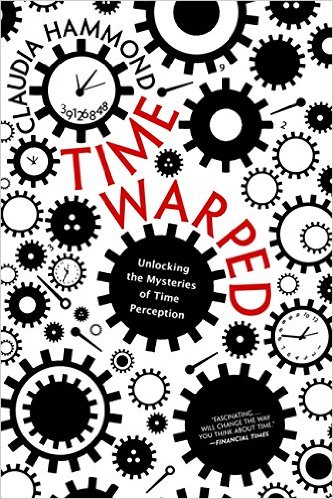

What's New

Words of Wisdom
52
cards and 15 activities to spark conversations and make sense of learning.
Learn more HERE.
What We Do
The Firefly Group helps people make sense of what they learn and experience.
Whether facilitating a group for better decision-making, keynoting a conference, leading a training, or writing an instructional design, we use novel methods that engage, spark creativity, and produce memorable results.
 If
this sounds like a good direction for your organization, let's talk about
how we might collaborate! Please give me a call (802.257.7247) or send an
. - Brian
If
this sounds like a good direction for your organization, let's talk about
how we might collaborate! Please give me a call (802.257.7247) or send an
. - Brian
 Your ETR (Estimated Time to Read): 10 minutes Your ETII (Estimated Time to Implement Ideas): 5 weeks |
What
can you teach with a glass of water and an index card?
Watch my video and find out!
 Join
me for the
Join
me for the
"Learning
Game Design Certification Program."
Find out when and how to use games, simulations, and interactive strategies to enhance learning and increase retention. Play a dozen different games that you can adapt for your own use in your training. Deconstruct the games you love and use them to teach important concepts in your next program. Meet other like-minded learning practitioners who share an interest in making learning fun and engaging.
When: December 20, 21, 22, 2016
Where: Kuala Lumpur, Malaysia
More Information: Read a detailed brochure HERE
December
2016
Time Warped: The oddities of time perception
|
Say
It Quick |
Discoveries bits of serendipity to inspire and motivate |
Ideas fuel for your own continuous learning |
Activities tips and tricks you can try today |
| Time Warped | When is the Meeting? |
There are many surprising ways we understand and perceive time. It can have a very elastic feel, speeding up or slowing down depending on what we are doing. And the way we understand time can also impact the way we interact with other people. As the end of the year approaches, this is a good opportunity to learn more about the subtleties of time beginning with this 99-Word Story.
Watching and Waiting
It was lunchtime. Sarah slid her leftovers into the microwave and tapped the minute, seconds, and start keys, then waited. And waited. She tapped her toes and still waited. Finally in frustration she announced through gritted teeth, "I don't have time for this!" Storming back to her office she left her lunch behind.Why was she so upset? There is absolutely no faster way to reheat food. Perhaps she wanted someone to eat it for her too!
The more you focus on time, the more you seem to have - especially when you want it the least.
 Time
Warped
Time
Warped
By Claudia Hammond
Many physicists and philosophers have focused on defining the nature - and even the existence - of time. But regardless of one's perspective, we definitely have the perception that time does exist and that it influences the way we live our lives.
It is our perception of time that is the subject of Claudia Hammond'sbook, Time Warped, a lively read that provides explanations of time's quirks as well as the variety of ways we perceive it individually.
Why does time slow during a crisis? Why do the years fly by as we age? Hammond explains that these observations are tied to our perception of time; the way our brain focuses attention, collects data, adds emotion, and remembers.
When we are bored, fearful, and bereft of stimulus or novelty, time seems to slow making days or weeks drag endlessly. Yet, over longer time periods, that same routine and repetition make the years contract as we look back on them in our old age. There simply are not enough high points to register distinct events worth remembering.
In contrast, focused attention, novelty, a high emotional state, and a sense of flow make the hours and days fly. And when we look back at a busy time period like this, it may seem to have expanded because we remember it being filled with so many unique experiences.
Attention seems to play a critical role in our perception of time. What grabs our attention engages our emotions and sticks in our memory. The more items we are able to remember from a situation, the more we perceive must have happened and the longer the time period must have been. This helps to explain why, when reacting to a crisis like a car crash or escaping a burning building, it feels like things are happening in slow motion. Our mind grabs as many information bits as possible knowing that anything might be helpful to survive.
Hammond also shares interesting individual differences in our time perception. Many people, perhaps you too, have a visual representation of time. These people see time as a continuous spiral or as a large loop. They place themselves and events on this image to sort out sequences and recall events.
Time Warped is not a time management book. But it will provide insight about why time may feel beyond your control in some instances and give insights and ideas for altering your perception of time so you can change your relationship to it.
More Information:
Time Warped by Claudia Hammond, HarperCollins, New York, © 2013, ISBN 987-0-06-222520-7"Why Time Slows Down When We're Afraid, Speeds Up as We Age, and Gets Warped on Vacation"
A review of Claudia Hammond's book.See also:
"What Exactly is Time Perception?"
A summary of current research on time perception which covers may topics similar to Hammond's book.Temporal Illusions:
An explanation of the ways we are deceived by our perception of time."Time to Dump Time Zones" by James Gleick, New York Times, November 5, 2016
James Gleick, the author of "Time Travel: A History," points out the arbitrary nature of some of our thinking about time.An Interactive Time Zone Map
Note the political nature of time zones. China, which is as large as Europe has just one time zone. Australia has four zones which do not all run north to south and sometimes change by 30 minutes rather than 60."The Power of a Minute: How to Get More Out of Every Minute in Your Day" by Kevin Eikenberry. Kevin Eikenberry, a consultant in organizational leadership and learning, describes how to find more time for doing the things you've always wanted to do.
Thinking about
Time
December and the end of another year is a good opportunity to wonder whether
we have used our time well. But we might just as easily question whether we
are all talking about the same thing when the topic of time comes up.
Time measurement is an arbitrary construct. A quick check of the internet reveals that the ancient Egyptians and Babylonians laid the foundation for our current system but no one knows why they divided every hour into 60 minutes or even every day into 24 hours - although those numbers are easily divided by multiples of both 2 and 3.
Yet having a sense of time is essential for our ability to function. We need a sense of time in order to speak coherently as well as to understand what others say. Our sense of time is indispensable in our ability to cross a street safely, drive a car, throw or catch a Frisbee, or tell a joke.
Time is one of those concepts that so pervades our lives that we rarely think about what it means to us. In everyday usage, we toss around many time-related concepts.
Metaphorically…
- We curse time or drag it out but take it as a gift when we unexpectedly gain more.
- We would like to find more time but instead often lose it, kill it, forget it, or waste it.
- When we are having fun, it flies but when under stress, it slows and even stops momentarily.
- We might borrow some once in a while and save it whenever we can but many of us still wish we could manage it better.
- Even though no one has actually traveled through it, you can be frozen in it if you don't run on it.
Time is also a metaphor for the arbitrary nature of many work practices. People have been paid by the hour at least since the Industrial Revolution when round-the-clock factory work began to replace agricultural work that had been governed by the passage of the sun. At this point, time became money - at least in North America.
But thinking about how we perceive time opens the possibility that time may not be money. Perhaps time in the workplace is effort; the energy we can exert. Or perhaps time is results; what we are able to produce.
The way we think about and describe time reveals insights into the way we view work, the contributions of other people, what we accomplish, and when.
What kinds of conversations about time have you had in your organization and what new ideas about productivity, collaboration, and purpose have resulted? Please "take a moment" to your insights!
When is the
Meeting?
Here is a quick activity that will reveal different thinking about time and
is sure to spark a conversation in your team about brief communications, expectations
about meetings, and social standards of timeliness. This activity is based
on an experiment in Claudia Hammond's book Time Warped, page 133.
When is the Meeting?
Goal: To reveal hidden assumptions and explore their significance for team functioning and productivity
Materials: Paper and pen for each person
Participants: Any size groupProcedure:
Tell the group that you will make a statement followed by a question and you would like everyone to immediately write their answer on a piece of paper. There is not a correct answer to the question and it is not a trick question so encourage people to NOT over think their answer. Also ask them to remain silent while they listen and respond.Make the following statement: "Suppose you have a standing meeting every Wednesday. One day, you receive an email which says, 'Next Wednesday's meeting has been moved forward by two days.'"
Pause a moment then ask people to write their answer to this question: "What day is the meeting now happening?"
Ask people to share their first, intuitive answer. Most likely, some will say the meeting is Monday; others will say Friday.
Invite people to share ideas about why there are two different answers for the same question. After hearing a few ideas, explain that both answers are correct depending on how you view time.
(If, by chance, everyone in the group has the same answer, point out that other people have given an equally correct answer. Ask what that answer might be.)
If you thought the meeting would be on Monday, then you probably think of time as moving toward you. It is as if you were standing beside a conveyor belt and time continuously brings events to you. You use a time-moving metaphor to experience time.
If you thought the meeting would be on Friday, then you probably think of yourself as moving through time. It is as if you are actively moving along a timeline toward the future. You use a person-moving metaphor to experience time.
Stress to everyone that there is no judgement about either the person-moving or the time-moving way to experience time. Neither is better than the other. But they do reveal different perceptions and expectations that are worth exploring. Use some of the following questions to help people consider the implications of their different relationships to time.
Discussion:
- Share an example of when your understanding of time was misunderstood.
- Describe what it is like as you anticipate an event (Solicit views from both time-moving and person-moving perspectives.).
- What are some advantages for holding each of the different views about time?
- Ask people to share some examples of how these different views of time are revealed through our language (e.g. "We are fast approaching Christmas" v. "Christmas is coming up fast")
- How might differences in viewing time cause problems in the workplace (beyond scheduling meetings)?
- What are some ways to reduce confusion about time?
- What surprises you most about these different ways to view future events and time?
Share the 99-Word Story titled Watching and Waiting with your group. Sarah seems to have the idea that she can possess time when she says, "I don't have time for this!"
- What are the implications of being able to possess time?
- Does Sarah have a time-moving or person-moving perspective of time?
- How might she have reacted if she had the opposing time perspective? (for example, a person-moving perspective might prompt someone to proactively do something else while waiting; a time-moving perspective might suggest quietly waiting, savoring the opportunity for inactivity.)
Point out that because she has not thought about her relationship to time, Sarah has turned a few seconds in front of the microwave into a source of frustration - and an empty stomach!
Conclude the activity with a final question: If we can have equally correct but opposite understandings of the same question, what does this say about the reliability of our perceptions?
|
Whether you need a keynote speaker, or help with strategic planning, performance improvement, or training facilitators and trainers in your organization, I look forward to your call (802.257.7247) or . -- Brian |
Read previous
issues. Click Library!
To add or delete your name to our mailing list, email
with a short note in the subject line.
I want this newsletter to be practical, succinct, and thoughtful. If you have suggestions about how I can meet these criteria, please let me know! Send me an with your thoughts and ideas.
Home
| Services | Products
| Mission | Ideas
| The Group | The
Buzz
(c)
2016 The Firefly Group